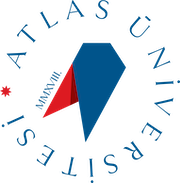| Week |
Subject |
Related Preparation |
| 1) |
An overview of OSI and TCP/IP models and Internet architecture. |
Computer Networking: A Top-Down Approach, 8th Edition, J. F. Kurose, K. W. Ross, Addison Wesley, 2020.
http://gaia.cs.umass.edu/kurose_ross/online_lectures.htm |
| 2) |
Packet switching and circuit switching network technologies. |
Computer Networking: A Top-Down Approach, 8th Edition, J. F. Kurose, K. W. Ross, Addison Wesley, 2020.
http://gaia.cs.umass.edu/kurose_ross/online_lectures.htm |
| 3) |
Delay, loss and throughput in packet-switched networks. |
Computer Networking: A Top-Down Approach, 8th Edition, J. F. Kurose, K. W. Ross, Addison Wesley, 2020.
http://gaia.cs.umass.edu/kurose_ross/online_lectures.htm |
| 4) |
Application Layer1: Socket programming, application layer protocols: DNS, HTTP, |
Computer Networking: A Top-Down Approach, 8th Edition, J. F. Kurose, K. W. Ross, Addison Wesley, 2020.
http://gaia.cs.umass.edu/kurose_ross/online_lectures.htm |
| 5) |
Application Layer 2: FTP, SMTP, POP3, and peer-to-peer networking. |
Computer Networking: A Top-Down Approach, 8th Edition, J. F. Kurose, K. W. Ross, Addison Wesley, 2020.
http://gaia.cs.umass.edu/kurose_ross/online_lectures.htm |
| 6) |
Transport Layer 1: Principles of reliable data transfer, |
Computer Networking: A Top-Down Approach, 8th Edition, J. F. Kurose, K. W. Ross, Addison Wesley, 2020.
http://gaia.cs.umass.edu/kurose_ross/online_lectures.htm |
| 7) |
Midterm Exam |
Computer Networking: A Top-Down Approach, 8th Edition, J. F. Kurose, K. W. Ross, Addison Wesley, 2020.
http://gaia.cs.umass.edu/kurose_ross/online_lectures.htm |
| 8) |
Transport Layer 2: TCP and UDP protocols, flow control and congestion control. |
Computer Networking: A Top-Down Approach, 8th Edition, J. F. Kurose, K. W. Ross, Addison Wesley, 2020.
http://gaia.cs.umass.edu/kurose_ross/online_lectures.htm |
| 9) |
Network Layer 1: IP protocol and addressing. |
Computer Networking: A Top-Down Approach, 8th Edition, J. F. Kurose, K. W. Ross, Addison Wesley, 2020.
http://gaia.cs.umass.edu/kurose_ross/online_lectures.htm |
| 10) |
Network Layer 2: Routing Algorithms: Link State, Distance Vector, Hierarchical Routing, |
Computer Networking: A Top-Down Approach, 8th Edition, J. F. Kurose, K. W. Ross, Addison Wesley, 2020.
http://gaia.cs.umass.edu/kurose_ross/online_lectures.htm |
| 11) |
Network Layer 3: Routing in the Internet: RIP, OSPF, BGP protocols. Broadcast and multicast routing. |
Computer Networking: A Top-Down Approach, 8th Edition, J. F. Kurose, K. W. Ross, Addison Wesley, 2020.
http://gaia.cs.umass.edu/kurose_ross/online_lectures.htm |
| 12) |
Data Link Layer 1: Data link protocols |
Computer Networking: A Top-Down Approach, 8th Edition, J. F. Kurose, K. W. Ross, Addison Wesley, 2020.
http://gaia.cs.umass.edu/kurose_ross/online_lectures.htm |
| 13) |
Data Link Layer 2: Local area networks: Ethernet and IEEE 802.11. |
Computer Networking: A Top-Down Approach, 8th Edition, J. F. Kurose, K. W. Ross, Addison Wesley, 2020.
http://gaia.cs.umass.edu/kurose_ross/online_lectures.htm |
| 14) |
Project Demonstration / Midterm Exam II |
Computer Networking: A Top-Down Approach, 8th Edition, J. F. Kurose, K. W. Ross, Addison Wesley, 2020.
http://gaia.cs.umass.edu/kurose_ross/online_lectures.htm |
| 15) |
Project Demonstration / Midterm Exam II |
Computer Networking: A Top-Down Approach, 8th Edition, J. F. Kurose, K. W. Ross, Addison Wesley, 2020.
http://gaia.cs.umass.edu/kurose_ross/online_lectures.htm |
| 16) |
Final Exam |
Computer Networking: A Top-Down Approach, 8th Edition, J. F. Kurose, K. W. Ross, Addison Wesley, 2020.
http://gaia.cs.umass.edu/kurose_ross/online_lectures.htm |
| |
Program Outcomes |
Level of Contribution |
| 1) |
Ability to reach wide and deep knowledge through scientific research in the field of Computer Science and Engineering, evaluate, interpret and apply. |
|
| 2) |
Ability to use scientific methods to cover and apply limited or missing knowledge, and to integrate the knowledge of different disciplines. |
|
| 3) |
Ability to construct Computer Science and Engineering problems, develop methods to solve the problems and use innovative methods in the solution. |
|
| 4) |
Ability to develop new and/or original ideas and algorithm; develop innovative solutions in the design of system, component or process. |
|
| 5) |
Ability to have extensive knowledge about current techniques and methods applied in Computer Engineering and their constraints. |
|
| 6) |
Ability to design and implement analytical modeling and experimental research, solve and interpret complex situations encountered in the process. |
|
| 7) |
Ability to use a foreign language (English) at least at the level of
European Language Portfolio B2 in verbal and written communication. |
|
| 8) |
Ability to lead in multidisciplinary teams, develop solutions to complex situations and take responsibility. |
|
| 9) |
Awareness of the social, legal, ethical and moral values, and the ability to conduct research and implementation work within the framework of these values. |
|
| 10) |
Awareness of the new and emerging applications in Computer Science and Engineering field, and the ability to examine them and learn if necessary. |
|
 BİLGİ PAKETİ / DERS KATALOĞU
BİLGİ PAKETİ / DERS KATALOĞU
